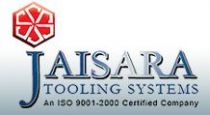Global Electric Powertrain Market Expected to Grow in Value to USD 191.4 Billion by 2027 with a CAGR of 14.9% - ResearchAndMarkets.com
The "Electric Powertrain Market by Component (Motor, 12V, HV/48V Battery, BMS, 48V ISG, Controller, PDM, DC/AC Inverter, DC/DC Converter & Others), Type (BEV, MHEV, Series, Parallel & Parallel-Series), Vehicle Type, and Region - Global Forecast to 2027" report has been added to ResearchAndMarkets.com's offering.
The global electric powertrain market is projected to reach USD 191.4 billion by 2027 from an estimated USD 62.9 billion in 2019, at a CAGR of 14.9%.
A decrease in emissions limits and attractive government incentives for EV buyers are significant factors for the growth of the electric powertrain market globally
All major players such as Bosch (Germany), Mitsubishi Electric (Japan), Magna (Canada), Continental AG (Germany), and Hitachi (Japan) are moving toward electromobility by showcasing their developments and business strategies in the electric powertrain market.
There are various factors propelling the electric powertrain market. The major factor being the emission norms across regions. For instance, the introduction of Euro VI, China VI, and PROCONVE P8 have driven the electric powertrain market by pushing automakers to come up with advanced electrified powertrain technologies. Also, attractive government incentives such as tax rebates and subsidies for buyers have also propelled the market growth.
On-board charger segment is witnessing the highest CAGR in the HEV/PHEV powertrain market
PHEVs use an on-board charger to recharge their battery. The increase in PHEV sales will drive the on-board charger market. In the US, various government incentives such as exemptions from sales taxes, tax credits, and rebates are driving the PHEV market. The presence of various PHEV models offered by BMW, Mercedes-Benz, Volvo, Porsche, Kia, and Hyundai is also driving the HEV/PHEV electric powertrain market. In China, the PHEV market is dominated by SAIC and BYD. Various developments such as Dana TM4's bidirectional charger inverter that can function both as a charger as well as an inverter will drive the on-board charger market.
BEV is expected to remain the segment in the electric powertrain market, by vehicle type
BEV sales are increasing at a rapid rate because of various government measures. The incentives on the purchase of BEVs are higher than any other type of electric vehicle. Growing charging infrastructure and better performance of BEVs over PHEVs are driving the BEV powertrain market. Stringent emission standards for vehicles and developments in electric powertrain products such as in Lithium-ion batteries, battery management systems, and power distribution modules are also driving the BEV powertrain market.
Asia Pacific is expected to register the fastest growth during the forecast period
The Asia Pacific electric powertrain market is estimated to be the fastest market. In Asia Pacific, China and India are estimated to be experiencing the highest CAGRs. In China, the government is providing subsidies to promote electric vehicles and cut down on pollution levels. The rise of electric vehicles for ride-sharing has increased their adoption in China. In India, BS VI is set to be rolled out by 2020, pushing the automakers to come up with new electrified powertrain technologies. Various ride-sharing companies such as Uber and Ola have been directed by the Indian government to have a 40% electric vehicle fleet by 2026.
Research Coverage:
The electric powertrain market is segmented on the basis of HEV/PHEV component [motor/generator, battery (HV battery and 12V battery), battery management system, controller, inverter/converter (AC/DC inverter and DC/DC converter), power distribution module, idle start-stop, on-board charger, and regenerative braking], BEV component [motor/generator, battery pack (12V battery and HV battery), battery management system, controller, inverter/converter (AC/DC inverter and DC/DC converter), power distribution module, idle start-stop, on-board charger, and regenerative braking)], 48V mild hybrid vehicle (MHEV) component (battery, battery management system, inverter/converter, 48V BSG/ISG, idle start-stop, and regenerative braking), powertrain type (BEV powertrain, MHEV powertrain, series hybrid powertrain, parallel hybrid powertrain, and series-parallel hybrid powertrain), vehicle type (HEV/PHEV, BEV, and 48V MHEV), and region (Asia Pacific, Europe, North America, and Rest of the world).
Key Benefits of Buying the Report:
The report will help the market leaders/new entrants in this market with the information on the closest approximations of the revenue numbers for the overall electric powertrain market and the subsegments. This report will help stakeholders understand the competitive landscape and gain more insights to better position their businesses and plan suitable go-to-market strategies. The report also helps stakeholders understand the pulse of the market and provides them with information on key market drivers, restraints, challenges, and opportunities.
Key Topics Covered:
1 Introduction
1.1 Objectives
1.2 Product Definition
1.3 Market Scope
1.4 Limitations
1.5 Stakeholders
2 Research Methodology
2.1 Research Data
2.2 Secondary Data
2.3 Primary Data
2.4 Market Size Estimation
2.5 Market Breakdown and Data Triangulation
2.6 Assumptions & Associated Risks
3 Executive Summary
4 Premium Insights
4.1 Attractive Opportunities in the Electric Powertrain Market
4.2 Electric Powertrain Market, By Region
4.3 HEV/PHEV Powertrain Market, By Component
4.4 BEV Powertrain Market, By Component
4.5 MHEV Powertrain Market, By Component
4.6 Electric Powertrain Market, By Powertrain Type
4.7 Electric Powertrain Market, By Vehicle Type
5 Market Overview
5.1 Introduction
5.2 Years Considered for the Study
5.3 Package Size
5.4 Market Dynamics
5.5 Revenue Missed: Opportunities for Electric Powertrain Manufacturers
5.6 Electric Powertrain Market, Scenarios (2018-2027)
5.7 Revenue Shift Driving Market Growth
6 Electric Powertrain Market, By Vehicle Type
6.1 Introduction
6.2 Operational Data
6.3 HEV/PHEV
6.4 BEV
6.5 48v Mild Hybrid Vehicle
7 HEV/PHEV Powertrain Market, By Component
7.1 Introduction
7.2 Motor/Generator
7.3 Battery
7.4 Battery Management System (BMS)
7.5 Controller
7.6 Inverter/Converter
7.7 Power Distribution Module
7.8 Idle Start-Stop
7.9 On-Board Charger
7.1 Regenerative Braking
8 BEV Powertrain Market, By Component
8.1 Introduction
8.2 Motor/Generator
8.3 Battery Pack
8.4 Battery Management System (BMS)
8.5 Controller
8.6 Inverter/Converter
8.7 Power Distribution Module
8.8 On-Board Charger
8.9 Regenerative Braking
9 48v MHEV Powertrain Market, By Component
9.1 Introduction
9.2 Operational Data
9.3 Battery
9.4 Battery Management System
9.5 Inverter/Converter
9.6 48v Isg/Bsg
9.7 Idle Start-Stop
9.8 Regenerative Braking
10 Electric Powertrain Market, By Powertrain Type
10.1 Introduction
10.2 BEV Powertrain
10.3 MHEV Powertrain
10.4 Series Hybrid Powertrain
10.5 Parallel Hybrid Powertrain
10.6 Series-Parallel Hybrid
11 Electric Powertrain Market, By Region
11.1 Introduction
11.2 Asia Pacific
11.3 Europe
11.4 North America
11.5 RoW
12 Competitive Landscape
12.1 Overview
12.2 Electric Powertrain Market: Market Ranking Analysis
12.3 Competitive Leadership Mapping
12.4 Competitive Scenario
12.5 Right to Win
13 Company Profiles
13.1 Key Players
13.1.1 Bosch
13.1.2 Mitsubishi Electric
13.1.3 Magna
13.1.4 Continental AG
13.1.5 Hitachi
13.1.6 Borgwarner
13.1.7 ZF
13.1.8 Denso
13.1.9 Dana Incorporated
13.1.10 Valeo Group
13.2 Asia Pacific
13.2.1 Nidec Corporation
13.2.2 Magneti Marelli Ck Holdings
13.2.3 Toyota Industries Corporation
13.2.4 Panasonic
13.3 Europe
13.3.1 Brusa Electronik
13.3.2 Cc Power Electronics
13.4 North America
13.4.1 Curtis Instruments
13.4.2 Kelly Controls
13.4.3 Filtran Llc
13.5 RoW
13.5.1 Moura Batteries
For more information about this report visit https://www.researchandmarkets.com/r/kmrms3
View source version on businesswire.com: https://www.businesswire.com/news/home/20200122005664/en/




